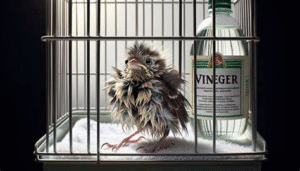📚 Why Understanding Your Dog’s Reproductive Anatomy Matters
Caring for a female dog involves more than just affection and routine walks—knowledge of her reproductive anatomy is essential for her health and wellbeing. The canine vagina is a muscular, tubular organ linking the vulva—the visible, external part—to the cervix, which serves as the gateway to the uterus. Beyond reproduction, this organ is integral to urination and general health maintenance. Observing the external vulva, you might notice it as a small fold of skin beneath the anus, with its appearance varying depending on factors such as breed, age, and spay status (PetMD).
A well-informed pet owner can more readily detect early changes—whether it be a swelling, abnormal discharge, or discomfort—that often signal medical issues. Understanding these anatomical structures not only helps in safeguarding your dog’s reproductive health but also aids in ensuring her overall happiness and longevity.
🏚️ Inside Your Dog’s Vagina: Structure and Function Explained
Internally, the canine vagina is lined with protective mucous membranes, which play a critical role in defending against infection while facilitating lubrication during important phases like heat (estrus) cycles, mating, and whelping (VCA Animal Hospitals). This lining hosts a balance of healthy bacteria and maintains a specific pH—elements vital for resisting infections.
The vaginal canal’s health is closely tied to hormonal fluctuations. During estrus, dogs may experience swelling or discharge, which are normal context-specific changes. Monitoring for changes outside these cycles—such as alterations in size, color, or sensation—can help owners catch early signs of potential health issues, including infections or anatomical disorders.
Maintaining the natural state of this area is important. For most dogs, this simply means keeping the region clean, watching for irritation, and avoiding unnecessary cleaning agents that could upset the delicate bacterial balance.
⚠️ Recognizing What’s Normal—and When to Seek Veterinary Advice
Every female dog is unique, making it essential for owners to become familiar with what is “normal” for their pet. Common, healthy variations include slight differences in vulva size, occasional non-foul-smelling discharge during certain phases, and mild swelling around estrus. However, persistent redness, excessive discharge, strong odor, frequent licking, or signs of discomfort can all hint at an underlying issue, such as vaginitis or infection (PetMD).
Routine veterinary checkups are an invaluable resource, offering professional assessment and catching subtle anatomical or functional irregularities early (VCA Animal Hospitals). These examinations might include visual inspections, palpation, or sample collections to screen for infectious or inflammatory conditions.
Educating yourself on your dog’s anatomy and being proactive about her care means you’re equipped to support her health throughout every life stage. If you ever notice sudden changes in the vulva or vaginal area—such as swelling, discoloration, lesions, or persistent discharge—contact your veterinarian for advice.
✨ Tips for Maintaining Optimal Vaginal Health
- Gently clean the external area as needed, especially after outdoor adventures or heavy soiling, using damp, soft cloths—never harsh chemicals.
- Monitor for any behavioral changes, such as increased licking or scooting, which may suggest irritation or infection.
- Keep up with regular veterinary exams, which can identify subtle health trends or anatomical concerns early (VCA Animal Hospitals).
- If your dog is unspayed, understand her unique heat cycle and prepare for normal estrus-related changes, so you can more easily spot if something falls out of the ordinary.
By paying close attention to both the visible and internal aspects of your female dog’s reproductive anatomy, you empower yourself to make informed decisions about her care. Combining routine observance, good hygiene, and veterinary partnership creates a foundation for your pet’s lifelong wellbeing.











